Biden Pledges $50 Million for Floating Wind Turbines Off US Coasts
(Bloomberg) -- The Biden administration on Thursday set a new goal for deploying floating wind turbines in deep waters off US coasts and unveiled nearly $50 million in initiatives designed to propel the nascent technology.
The effort is aimed at positioning the US to be a world leader in selling and using floating wind turbines that can generate electricity in deep waters outside the reach of conventional equipment that must be installed in the seabed.
“Floating wind has incredible potential,” Interior Secretary Deb Haaland told reporters on a conference call Thursday. “It can establish the United States as a global leader in advancing new technology.”
The Interior Department will advance wind leases in deep US waters with the goal of deploying 15 gigawatts of floating offshore wind capacity by 2035 -- some 150 times more than what’s currently installed around the world.
Already, the Interior Department is set to auction wind rights off the California coast by the end of the year and has taken steps toward a sale of wind leases in the Gulf of Maine -- two areas that compel the use of floating technology. However, administration officials would not specify Thursday what other territory is being considered for leasing to meet the 15 gigawatt floating wind target. About two-thirds of America’s offshore wind energy potential is in deep waters where current, conventional fixed-bottom turbines can’t go.
More: Biden Charts Path for Floating Wind Turbines Off Maine Coast
Just about 100 megawatts of floating wind capacity is used globally today, with higher costs and operational concerns deterring more widespread deployment. Concerns also have been raised about the potential for large floating wind arrays, subsea transmission cables and mooring lines to impair fishing in the region.
A new US initiative dubbed the “Floating Offshore Wind Shot” aims to pare the costs of floating wind technologies by more than 70% -- to $45 per megawatt-hour -- by 2035, said Energy Secretary Jennifer Granholm. The initiative builds on separate efforts to accelerate hydrogen, carbon capture and other technology.
The Advanced Research Projects Agency-Energy will announce $31 million to advance novel engineering and experimental testing of floating offshore wind systems. The Energy Department also is holding a $6.85 million competition for floating platform technologies and using $3 million to help industry design commercial-scale floating wind farm arrays, including the network of anchors, mooring lines and subsea power cables necessary to support them.
Read: Biden Wind-Farm Sale Opens Path to Turbines on Nearly All Coasts
Western US states are counting on the technology to meet their decarbonization goals. Oregon just laid out a target for 100% clean energy by 2040 and California has a goal of 25 gigawatts of offshore wind by 2045.
“Offshore wind is a critical part of our planning for the future,” said Oregon Governor Kate Brown. “Meeting our goals, those of other western states and of the nation as a whole will mean deploying clean energy technology on an unprecedented scale -- particularly as states continue to retire coal plants.”
Power demand could triple by mid century as more electric vehicles hit the roads, buildings are electrified and high-speed rail developed, said California Energy Commission Chair David Hochschild.
The cost of some clean energy technologies, particularly solar and lithium-ion batteries, already has dropped dramatically, he said. With big goals, substantial investment and policy stability, “we can do the same for offshore wind.”
More stories like this are available on bloomberg.com
©2022 Bloomberg L.P.
KEEPING THE ENERGY INDUSTRY CONNECTED
Subscribe to our newsletter and get the best of Energy Connects directly to your inbox each week.
By subscribing, you agree to the processing of your personal data by dmg events as described in the Privacy Policy.
More renewables news

With Trump Looming, Biden’s Green Bank Moves to Close Billions in Deals
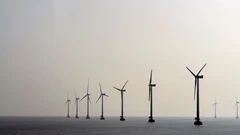
GE Vernova Expects More Trouble for Struggling Offshore Wind Industry

Climate Tech Funds See Cash Pile Rise to $86 Billion as Investing Slows

GE Vernova to Power City-Sized Data Centers With Gas as AI Demand Soars
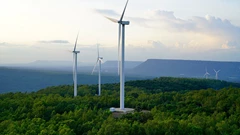
Longi Delays Solar Module Plant in China as Sector Struggles
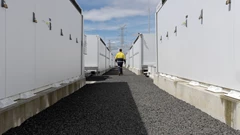
Australia Picks BP, Neoen Projects in Biggest Renewables Tender
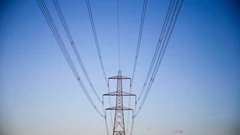
SSE Plans £22 Billion Investment to Bolster Scotland’s Grid
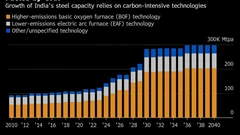
A Booming and Coal-Heavy Steel Sector Risks India’s Green Goals

bp and JERA join forces to create global offshore wind joint venture
















